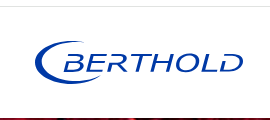
RNA Quantification: A Key Tool in Molecular Biology
RNA quantification is a crucial technique in molecular biology that allows researchers to measure the amount of RNA present in a sample. It plays an essential role in studying gene expression, understanding cellular processes, and identifying disease biomarkers. Accurate RNA quantification is critical for experiments such as RT-PCR, RNA sequencing, and gene expression analysis.
RNA, or ribonucleic acid, is a molecule that carries genetic information from DNA to the ribosome, where proteins are synthesized. Quantifying RNA helps researchers understand how much a specific gene is being expressed in a cell or tissue sample. Changes in RNA levels can indicate how cells respond to different conditions, such as stress, disease, or drug treatments.
There are several methods used to quantify RNA, each with its own advantages and limitations. Some of the most commonly used techniques include:
- Spectrophotometry: This method measures the absorbance of ultraviolet (UV) light by RNA at a wavelength of 260 nm. The concentration of RNA can be determined based on the absorbance, using the Beer-Lambert law. Although spectrophotometry is simple and fast, it does not distinguish between RNA and DNA, so it’s essential to assess RNA purity by measuring absorbance at 280 nm and calculating the ratio of absorbance at 260 nm/280 nm.
- Fluorometry: Fluorometric assays use a fluorescent dye that binds specifically to RNA. When exposed to light of a particular wavelength, the dye emits fluorescence, and the intensity of the fluorescence is proportional to the RNA concentration. This method is more sensitive than spectrophotometry and can distinguish RNA from DNA, making it ideal for low RNA concentrations.
- Reverse Transcription Quantitative PCR (RT-qPCR): RT-qPCR is a widely used technique for quantifying RNA. In this method, RNA is first reverse-transcribed into complementary DNA (cDNA), and then the cDNA is amplified and quantified using PCR. The amount of cDNA generated is directly proportional to the amount of RNA in the sample. RT-qPCR is highly sensitive and can be used to measure gene expression levels with high precision.
- RNA Sequencing (RNA-Seq): RNA-Seq is a high-throughput sequencing method that allows for comprehensive analysis of RNA expression across the entire transcriptome. RNA-Seq provides detailed information about the quantity and quality of RNA in a sample, enabling the detection of gene expression, alternative splicing events, and non-coding RNAs. This method is increasingly used for transcriptomic studies, although it is more complex and expensive than other quantification methods.
- Northern Blotting: Although less commonly used today due to the advent of more advanced techniques, Northern blotting remains a traditional method for RNA quantification. It involves separating RNA samples by gel electrophoresis, transferring them to a membrane, and hybridizing them with a labeled probe specific to the RNA of interest. The intensity of the signal reflects the abundance of the target RNA.
Each RNA site can quantification method has its own strengths and weaknesses, and the choice of method depends on the specific needs of the experiment. For example, if high sensitivity is required, fluorometry or RT-qPCR may be the preferred choice, while RNA-Seq offers a more comprehensive analysis of gene expression.
In conclusion, RNA quantification web site is essential for understanding gene expression and cellular functions. By accurately measuring RNA levels, scientists can gain valuable insights into biological processes, diagnose diseases, and develop new therapeutic approaches